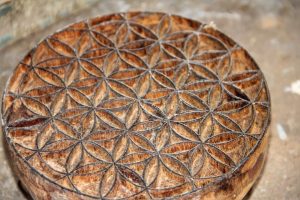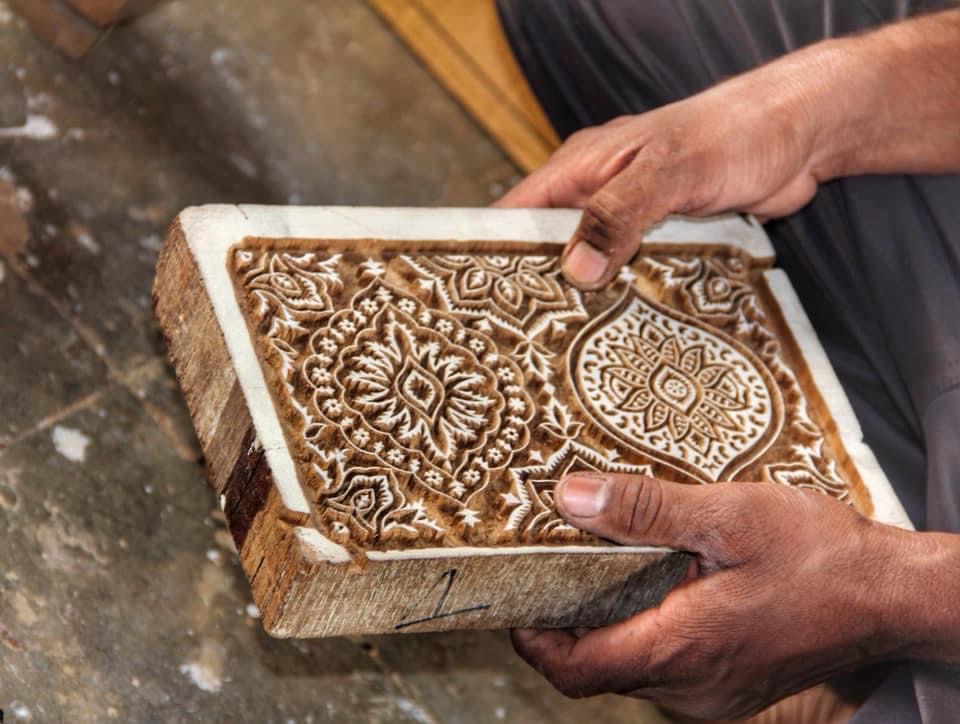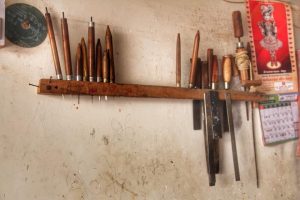THREADS OF LIFE
Wooden block making has been a popular profession among the inhabitants of Pethapur for about 300 years. but NOW their future seems bleak.
Story and Pictures : Savitha Suri

Block maker, block maker, Make me a block’ to paraphrase a popular song.
And the block makers obliged. And they still do. Except there are fewer of them; far fewer.
Pethapur State was a small princely state belonging to the Mahi Kantha Agency of the Bombay Presidency during the era of the British Raj.
It was centered on Pethapur village, in present-day Gandhinagar district, a place renowned for block-making.
In the 13th century, King Pethasinh of Pethapur ruled over Shertha town. After the death of Parmar Pethasinh, the Gujarat Sultanate of Patan used this land as battle ground.
Sultan Ahmed Shah decided to move his capital from Patan to a new city, and built Ahmedabad.
In 1960, Bombay state was split in two different states, Gujarat and Maharashtra. Ahmedabad became capital of Gujarat, and a new capital city was to be built on land which was once part of Pethapur state.
On 1 February 1940 Pethapur State became the first petty princely state to be subject to the Attachment Scheme, being integrated with Baroda State.
The last ruler was Fateh Singh, born 3 October 1895 who nominally ruled till Indian independence while the process for joining India was active. Finally Baroda State acceded to the Indian Union on 1 May 1949.


\



Pethapur village is a hub of wood block makers, who supply customized blocks to the centers of block printing. Wooden block making has been a popular profession among the inhabitants of Pethapur for about 300 years.
The craftsmen use only teak wood (locally known as Sagwan) sourced from Valsad (near Gujarat-Maharashtra border). Teak is the perfect base for carving as it is strong and doesn’t absorb water or distort in shape or size.
The craftsmen cut pieces according to the required block size, careful to cut away from any knots in the wood. The wood is painted white and then the design traced on to it, to increase contrast and visibility.
These expert craftsmen can carve blocks with lines almost a millimeter thin and so close together, that it is a wonder how even one chisel stroke, that could leave the design spoiled and useless, does not go wrong.



They make blocks for printing designs in one to four colours, sometimes more, but the craftsmanship is so precise that the fields and outlines of the motifs match flawlessly.
The craftsmen use a hand drill arrangement that involves a bow (Kamthi) and a driller (Saarardi) to drill out larger portions from the block; and for the finer shapes, they use a variety of chisels in different shapes and sizes. They make their tools themselves according to their requirement.
These expert craftsmen can carve blocks with lines almost a millimeter thin and so close together, that it is a wonder how even one chisel stroke, that could leave the design spoiled and useless, does not go wrong.
Block making is an endangered one. the village has only a little over a dozen block makers left.
They make blocks for printing designs in one to four colours, sometimes more, but the craftsmanship is so precise that the fields and outlines of the motifs match flawlessly.
Wooden blocks range from as small as 1” to 16” in size and while a basic block, 3 to 4 inches across takes a day or two to make, an intricate one can take almost a week’s work.
Like almost all Indian crafts, block making is an endangered one. Pethapur has only a little over a dozen block makers left and with no younger generation to take over, the future seems bleak.
To understand the impact of the loss of this skill, visualise the lack of block makers for any surface embellishment like Ajrakh, Bagh, Kalamkari, Sanganeri etc.
No block maker, no block printer. As simple and ruthless as that.

SAVITHA SURI IS A TEXTILE ENTHUSIAST AND WORKS IN DOCUMENTING TEXTILE HISTORY & TRADITIONS. SHE HEADS THE WICCI – MAHARASHTRA HANDLOOM COUNCIL.
EMAIL: PRAVAAHA.COMMUNICATIONS@GMAIL.COM



